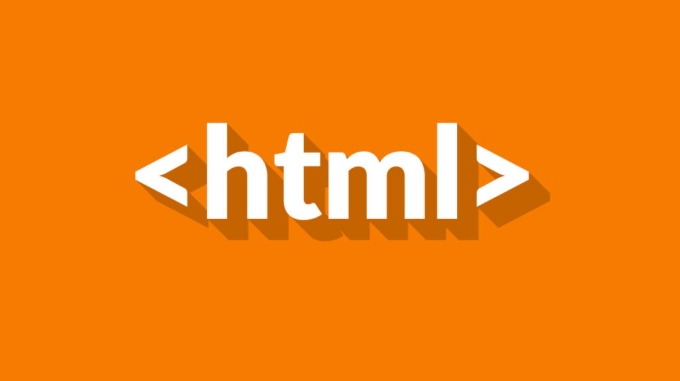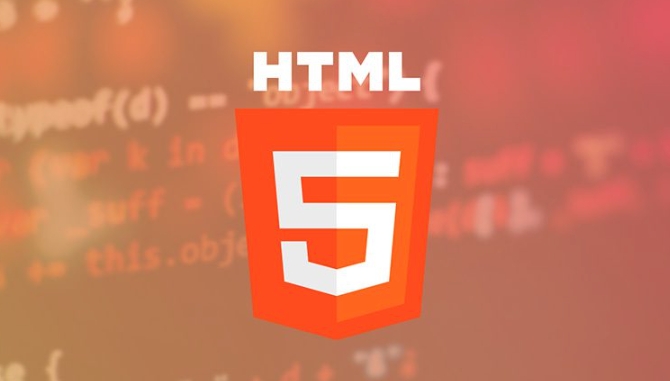 Web Front-end
Web Front-end
 HTML Tutorial
HTML Tutorial
 What is the role in html attributes and how does it relate to ARIA for accessibility?
What is the role in html attributes and how does it relate to ARIA for accessibility?
What is the role in html attributes and how does it relate to ARIA for accessibility?
Jul 01, 2025 am 01:30 AMThe role attribute defines what an element is or does when using native HTML elements isn’t possible. 1. It tells assistive technologies like screen readers how to interpret custom components built with non-semantic elements such as

HTML attributes like role play a key role in making web content more accessible, especially for users who rely on assistive technologies such as screen readers. While HTML has built-in semantics—like using <button></button> for buttons or <nav></nav> for navigation areas—sometimes developers need to go beyond standard elements to convey the correct meaning. That’s where ARIA (Accessible Rich Internet Applications) comes in, and the role attribute is one of its core tools.

What does the role attribute do?
The role attribute helps define what an element is or does, especially when it's not possible or practical to use a native HTML element. For example, if you're building a custom dropdown menu using <div>s and <code><span></span>s, a screen reader might not know how to interpret those elements without extra help.
By adding something like role="menu" or role="menuitem", you’re telling assistive technologies that this block behaves like a menu with selectable items. This doesn’t change how the element looks visually but gives screen readers the context they need to present the information correctly.
Some common roles include:

-
navigation– for site navigation links -
button– when creating a clickable element that isn't a<button></button> -
alert– to announce important messages -
dialog– for modal windows
How role works with ARIA attributes
ARIA includes not just roles, but also states and properties like aria-expanded, aria-label, and aria-selected. These work together to provide richer accessibility information.
For instance, imagine a collapsible accordion component. You might use:
<div role="button" aria-expanded="false" aria-controls="panel1"> Click to expand </div> <div id="panel1" role="region" aria-hidden="true"> Hidden content here. </div>
In this case:
-
role="button"tells screen readers this is interactive -
aria-expandedindicates whether the section is open or closed -
aria-controlslinks the button to the content it controls -
aria-hiddentells the screen reader whether to read the content
All these pieces work together to create an accessible experience that mimics native behavior.
When should you use role?
You don’t always need to use role. In fact, if there's a native HTML element that already represents the function, you should use that instead. Native elements come with built-in keyboard support and accessibility semantics.
Use role when:
- You're building a custom component that doesn’t have a native equivalent (like tabs, sliders, or complex widgets)
- You're repurposing a basic element like a
<div> or <code><span></span>to act like something else - You're enhancing existing markup to better communicate intent to screen readers
- ? Using
role="button"on a non-interactive element like a plain<div> without adding keyboard support (like <code>tabindex="0"and handling Enter/Space key events) - ? Overriding native semantics unnecessarily, like putting
role="paragraph"on a<p></p>tag - ? Forgetting to update roles and ARIA attributes dynamically as the UI changes (e.g., forgetting to toggle
aria-expandedwhen a menu opens)
One thing to note: some roles are meant to be used only in specific contexts. For example, role="grid" should only be used with elements containing rows and cells (role="row" and role="gridcell"), otherwise it can confuse screen reader users.
A few common mistakes to avoid
Sometimes using role incorrectly can make things less accessible. Here are a few pitfalls to watch out for:
Also, not all roles are supported across all browsers and screen readers, so it’s worth checking ARIA specs or using tools like axe or Lighthouse to test your implementation.
It’s not magic, but when used properly, the role attribute and ARIA can make a big difference in how accessible your site feels to users who rely on screen readers. Just remember: start with semantic HTML, then enhance with ARIA where needed.
The above is the detailed content of What is the role in html attributes and how does it relate to ARIA for accessibility?. For more information, please follow other related articles on the PHP Chinese website!

Hot AI Tools

Undress AI Tool
Undress images for free

Undresser.AI Undress
AI-powered app for creating realistic nude photos

AI Clothes Remover
Online AI tool for removing clothes from photos.

Clothoff.io
AI clothes remover

Video Face Swap
Swap faces in any video effortlessly with our completely free AI face swap tool!

Hot Article

Hot Tools

Notepad++7.3.1
Easy-to-use and free code editor

SublimeText3 Chinese version
Chinese version, very easy to use

Zend Studio 13.0.1
Powerful PHP integrated development environment

Dreamweaver CS6
Visual web development tools

SublimeText3 Mac version
God-level code editing software (SublimeText3)
 Implementing Clickable Buttons Using the HTML button Element
Jul 07, 2025 am 02:31 AM
Implementing Clickable Buttons Using the HTML button Element
Jul 07, 2025 am 02:31 AM
To use HTML button elements to achieve clickable buttons, you must first master its basic usage and common precautions. 1. Create buttons with tags and define behaviors through type attributes (such as button, submit, reset), which is submitted by default; 2. Add interactive functions through JavaScript, which can be written inline or bind event listeners through ID to improve maintenance; 3. Use CSS to customize styles, including background color, border, rounded corners and hover/active status effects to enhance user experience; 4. Pay attention to common problems: make sure that the disabled attribute is not enabled, JS events are correctly bound, layout occlusion, and use the help of developer tools to troubleshoot exceptions. Master this
 Configuring Document Metadata Within the HTML head Element
Jul 09, 2025 am 02:30 AM
Configuring Document Metadata Within the HTML head Element
Jul 09, 2025 am 02:30 AM
Metadata in HTMLhead is crucial for SEO, social sharing, and browser behavior. 1. Set the page title and description, use and keep it concise and unique; 2. Add OpenGraph and Twitter card information to optimize social sharing effects, pay attention to the image size and use debugging tools to test; 3. Define the character set and viewport settings to ensure multi-language support is adapted to the mobile terminal; 4. Optional tags such as author copyright, robots control and canonical prevent duplicate content should also be configured reasonably.
 Best HTML tutorial for beginners in 2025
Jul 08, 2025 am 12:25 AM
Best HTML tutorial for beginners in 2025
Jul 08, 2025 am 12:25 AM
TolearnHTMLin2025,chooseatutorialthatbalanceshands-onpracticewithmodernstandardsandintegratesCSSandJavaScriptbasics.1.Prioritizehands-onlearningwithstep-by-stepprojectslikebuildingapersonalprofileorbloglayout.2.EnsureitcoversmodernHTMLelementssuchas,
 HTML for email templates tutorial
Jul 10, 2025 pm 02:01 PM
HTML for email templates tutorial
Jul 10, 2025 pm 02:01 PM
How to make HTML mail templates with good compatibility? First, you need to build a structure with tables to avoid using div flex or grid layout; secondly, all styles must be inlined and cannot rely on external CSS; then the picture should be added with alt description and use a public URL, and the buttons should be simulated with a table or td with background color; finally, you must test and adjust the details on multiple clients.
 How to associate captions with images or media using the html figure and figcaption elements?
Jul 07, 2025 am 02:30 AM
How to associate captions with images or media using the html figure and figcaption elements?
Jul 07, 2025 am 02:30 AM
Using HTML sums allows for intuitive and semantic clarity to add caption text to images or media. 1. Used to wrap independent media content, such as pictures, videos or code blocks; 2. It is placed as its explanatory text, and can be located above or below the media; 3. They not only improve the clarity of the page structure, but also enhance accessibility and SEO effect; 4. When using it, you should pay attention to avoid abuse, and apply to content that needs to be emphasized and accompanied by description, rather than ordinary decorative pictures; 5. The alt attribute that cannot be ignored, which is different from figcaption; 6. The figcaption is flexible and can be placed at the top or bottom of the figure as needed. Using these two tags correctly helps to build semantic and easy to understand web content.
 What are the most commonly used global attributes in html?
Jul 10, 2025 am 10:58 AM
What are the most commonly used global attributes in html?
Jul 10, 2025 am 10:58 AM
class, id, style, data-, and title are the most commonly used global attributes in HTML. class is used to specify one or more class names to facilitate style setting and JavaScript operations; id provides unique identifiers for elements, suitable for anchor jumps and JavaScript control; style allows for inline styles to be added, suitable for temporary debugging but not recommended for large-scale use; data-properties are used to store custom data, which is convenient for front-end and back-end interaction; title is used to add mouseover prompts, but its style and behavior are limited by the browser. Reasonable selection of these attributes can improve development efficiency and user experience.
 How to handle forms submission in HTML without a server?
Jul 09, 2025 am 01:14 AM
How to handle forms submission in HTML without a server?
Jul 09, 2025 am 01:14 AM
When there is no backend server, HTML form submission can still be processed through front-end technology or third-party services. Specific methods include: 1. Use JavaScript to intercept form submissions to achieve input verification and user feedback, but the data will not be persisted; 2. Use third-party serverless form services such as Formspree to collect data and provide email notification and redirection functions; 3. Use localStorage to store temporary client data, which is suitable for saving user preferences or managing single-page application status, but is not suitable for long-term storage of sensitive information.
 Implementing Native Lazy Loading for Images in HTML
Jul 12, 2025 am 12:48 AM
Implementing Native Lazy Loading for Images in HTML
Jul 12, 2025 am 12:48 AM
Native lazy loading is a built-in browser function that enables lazy loading of pictures by adding loading="lazy" attribute to the tag. 1. It does not require JavaScript or third-party libraries, and is used directly in HTML; 2. It is suitable for pictures that are not displayed on the first screen below the page, picture gallery scrolling add-ons and large picture resources; 3. It is not suitable for pictures with first screen or display:none; 4. When using it, a suitable placeholder should be set to avoid layout jitter; 5. It should optimize responsive image loading in combination with srcset and sizes attributes; 6. Compatibility issues need to be considered. Some old browsers do not support it. They can be used through feature detection and combined with JavaScript solutions.





